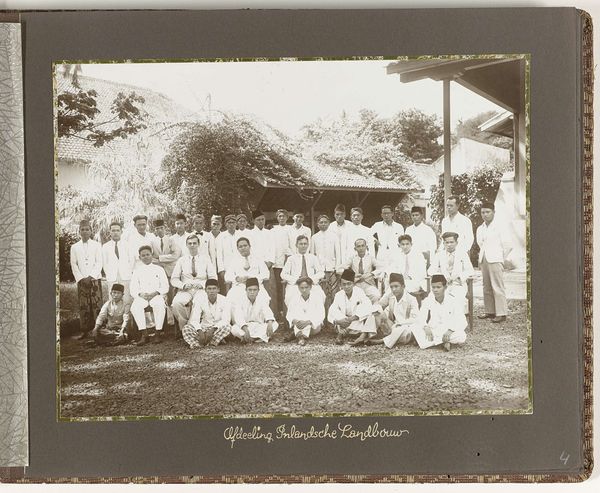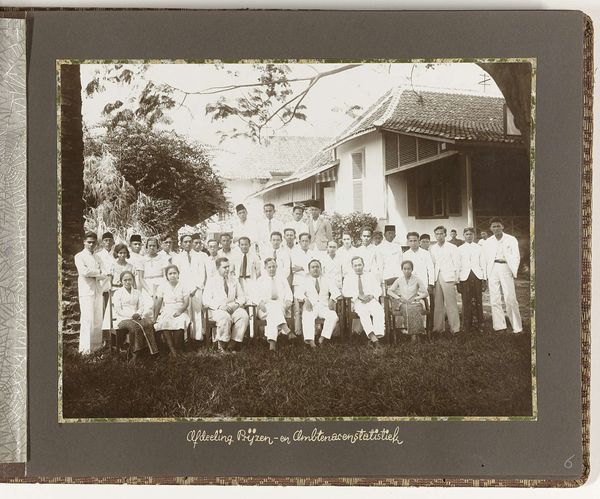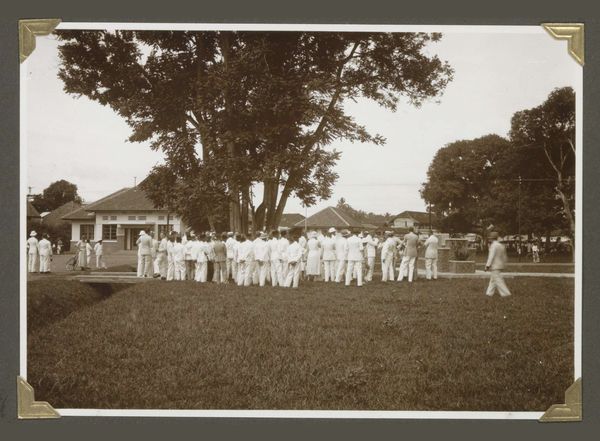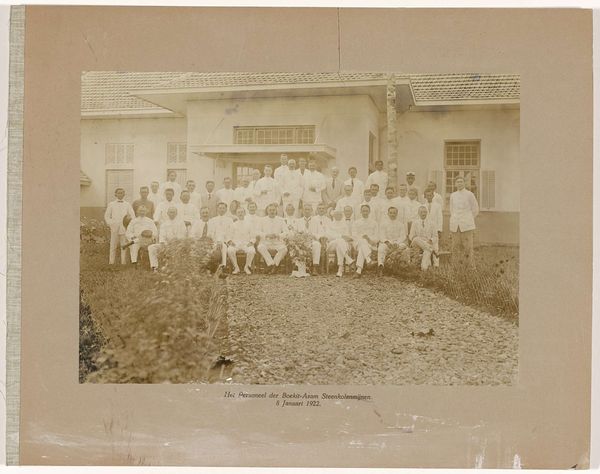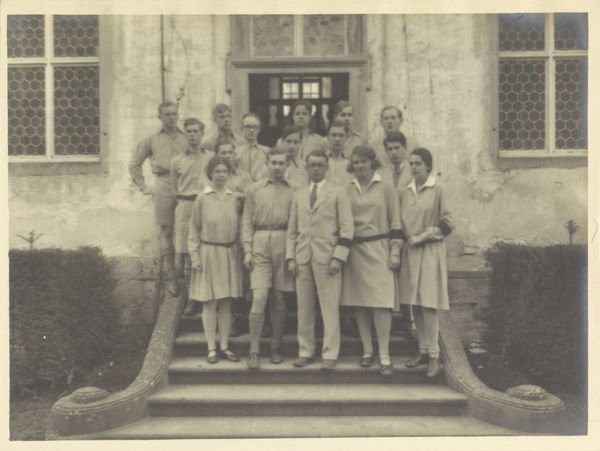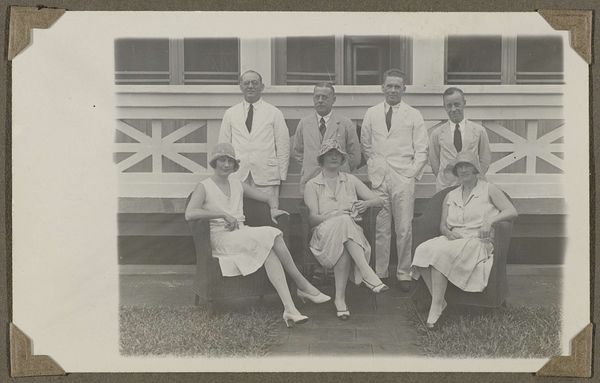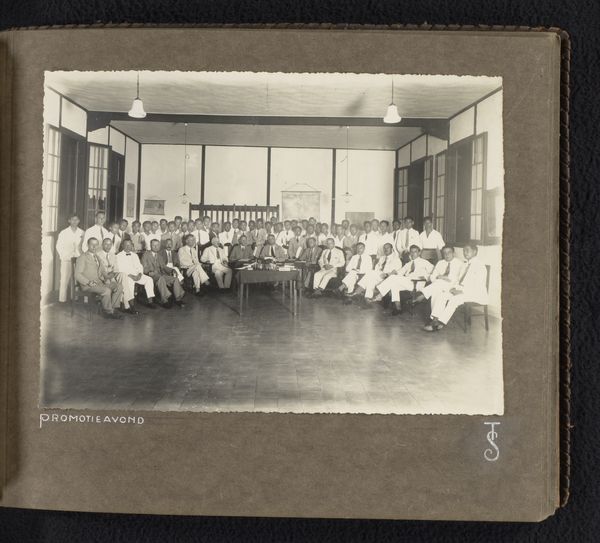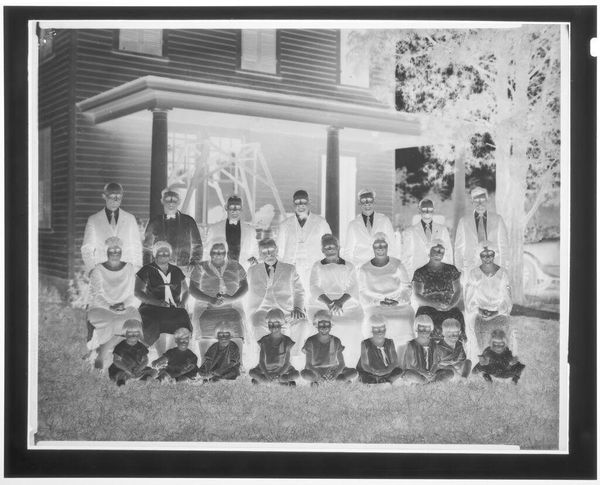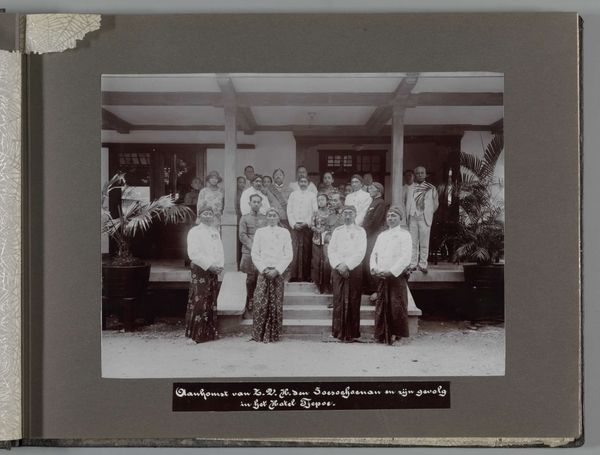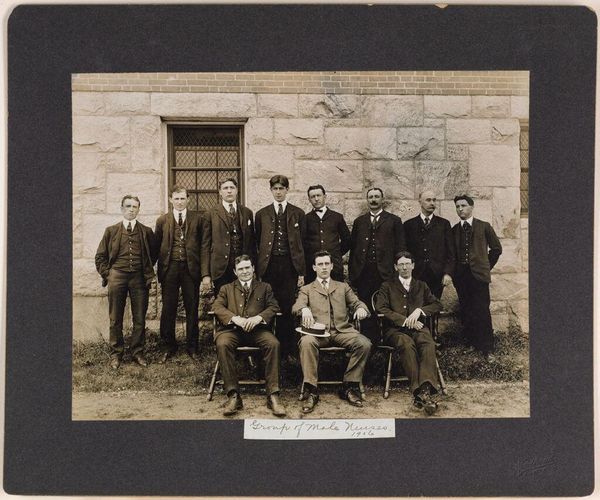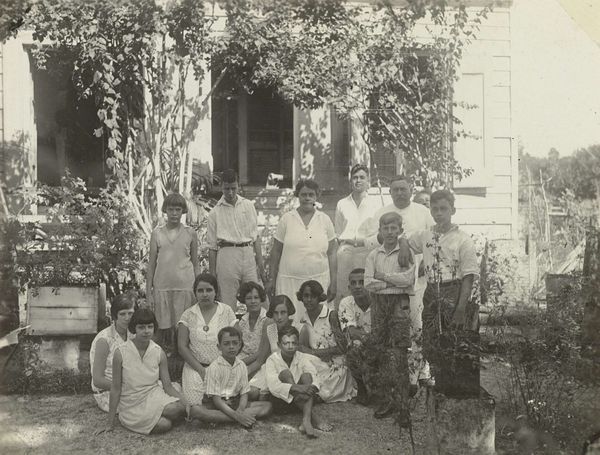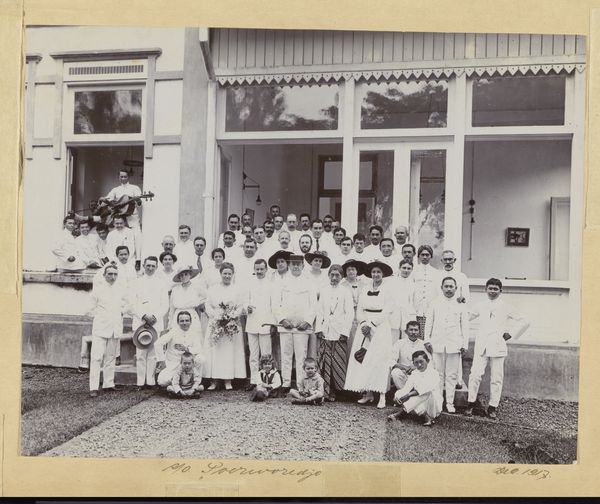
Afdeling Grote Landbouw van het Centraal Kantoor voor de Statistiek te Batavia Possibly 1935
0:00
0:00
photography
#
portrait
#
photography
#
modernism
#
realism
Dimensions: length 167 mm, width 223 mm
Copyright: Rijks Museum: Open Domain
Curator: Well, this intriguing photograph, believed to be from 1935, is titled "Afdeling Grote Landbouw van het Centraal Kantoor voor de Statistiek te Batavia," or "The Large Agriculture Section of the Central Bureau of Statistics in Batavia". It's a black and white image, a formal portrait capturing a moment in time. Editor: My initial response is struck by the composition— the rigid rows of men positioned on a slightly overgrown lawn offer this immediate, striking tension between control and nature, wouldn't you agree? Curator: Absolutely. Looking deeper, the arrangement speaks volumes about the hierarchical social structures present in the colonial context of Batavia, now Jakarta. There is a distinct racial divide apparent with most appearing to be colonizers or other European staff in their formal suiting and some local employees in the front in different traditional dress. It reflects the systemic inequalities of that era. Editor: Focusing just on the image, I can note that the strong contrasts create depth despite its monochromatic palette. The bright suits of the central and rear figures in a medium hue are contrasted against the foreground group and create the center of visual gravity for this picture. There are subtle tonal relationships at play. Curator: And this staging, though appearing straightforward, tells a complex story about identity, labor, and the representation of power dynamics within agricultural administration in the Dutch East Indies, what does this all mean considering post-colonial political identity? It's not just a photograph; it's a historical document rife with the politics of representation. Editor: But isn’t that the photograph’s magic? You see the politics immediately; I see visual harmony and its immediate disruption, formal structure, the arrangement of bodies in space, the semiotic weight of light and shadow on each suit. It speaks about form exceeding pure history alone. Curator: And form certainly plays its part, influencing and shaping the message. Yet, separating the artistry from its socio-political genesis risks sanitizing the narrative, diluting the important discourse about the lasting legacies of colonialism. Editor: Point taken. Ultimately, as our audience considers the photograph’s stark reality, hopefully this illuminates the power dynamics inherent to how history is both created and visualized. Curator: Precisely. It really provides rich avenues for understanding how photographs from that period continue to speak to current conversations about inclusivity and diversity.
Comments
No comments
Be the first to comment and join the conversation on the ultimate creative platform.
